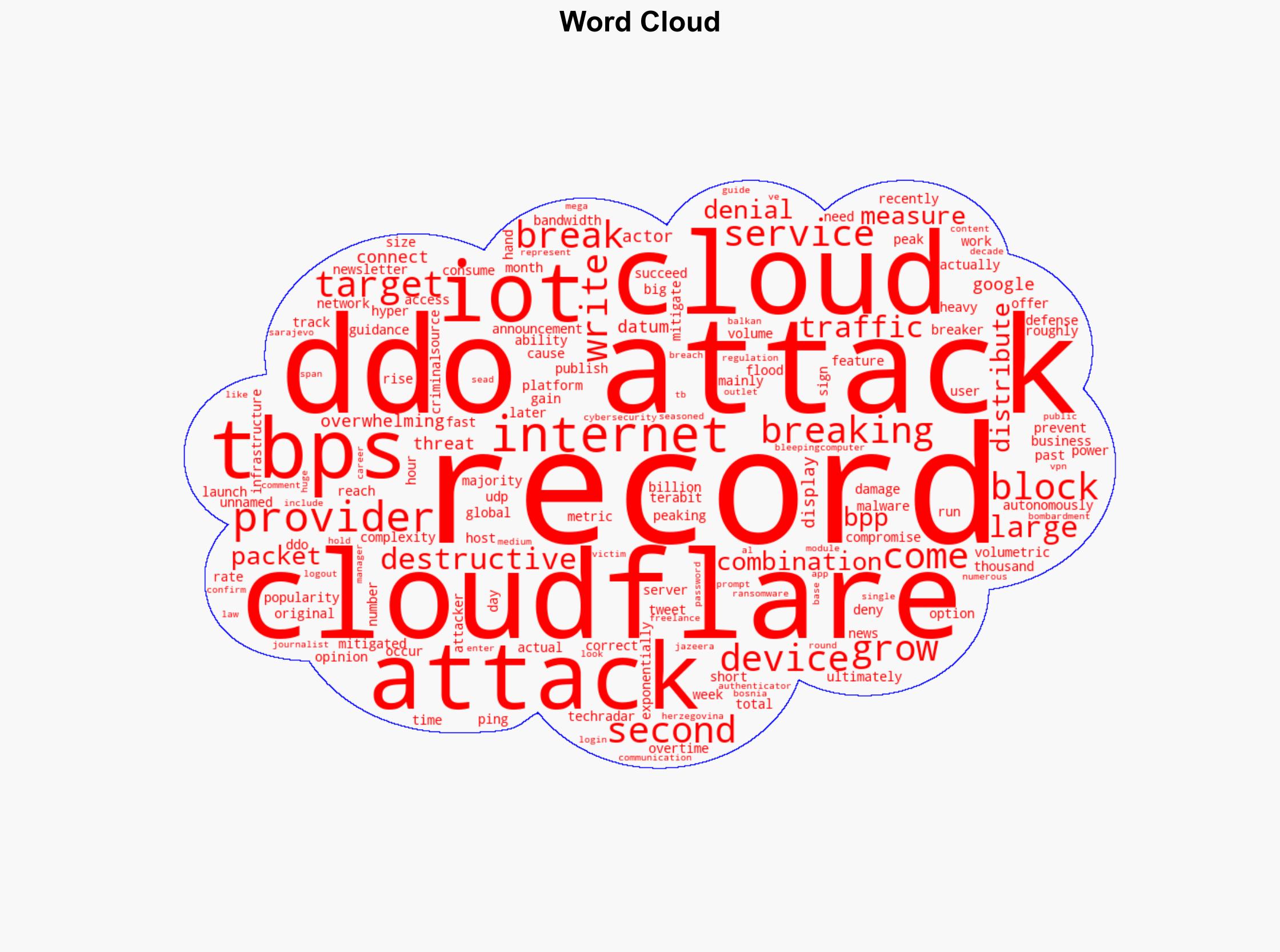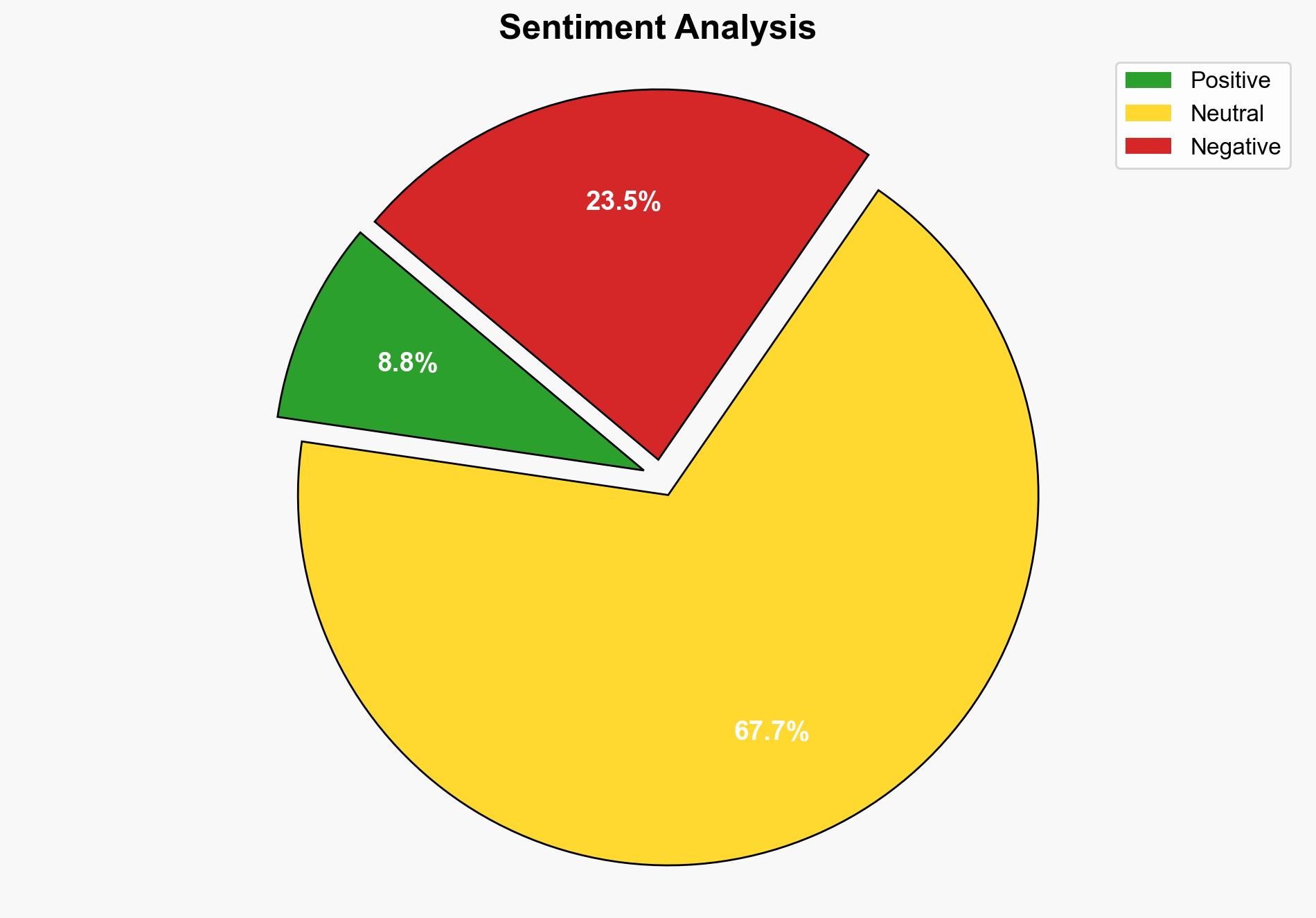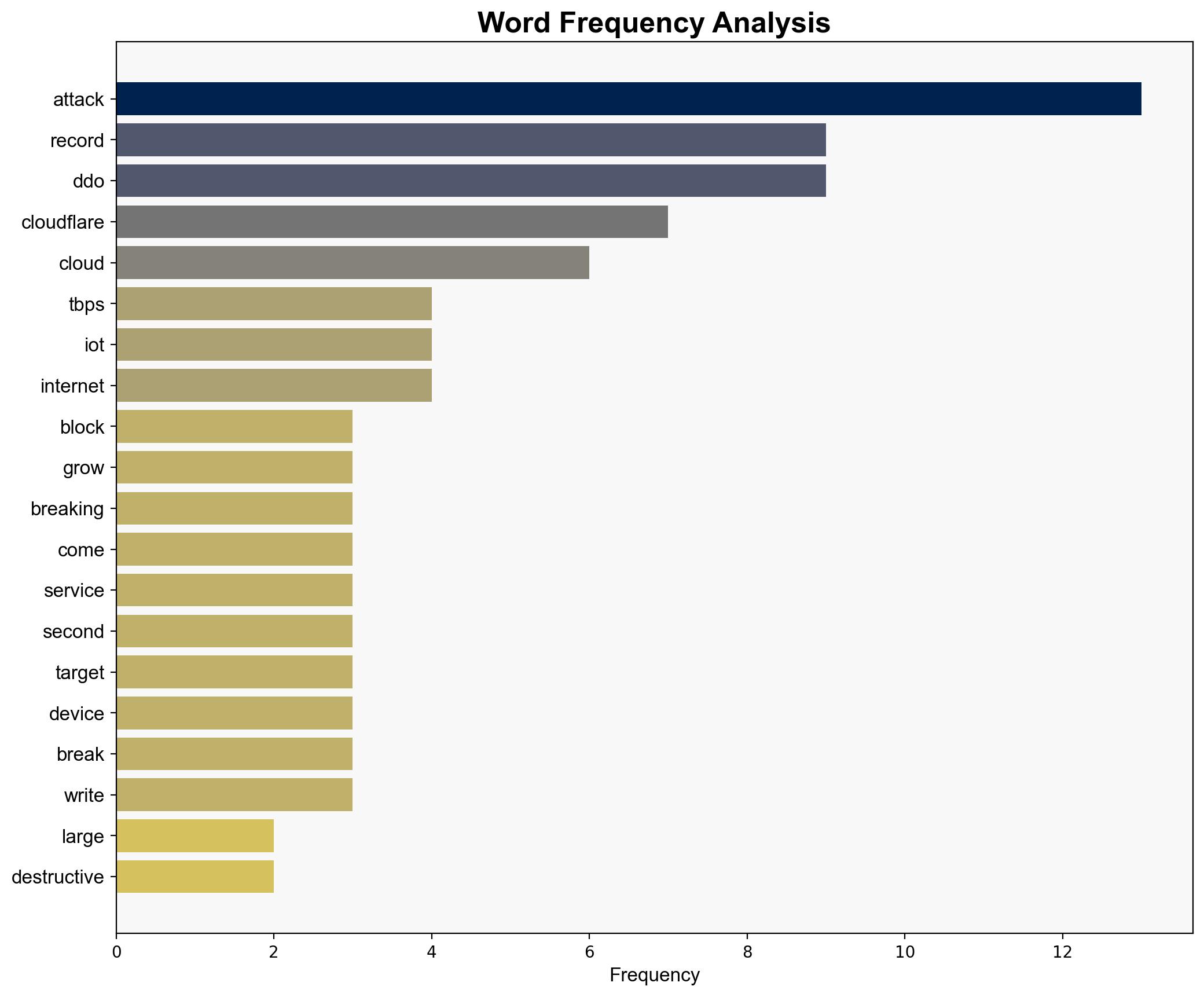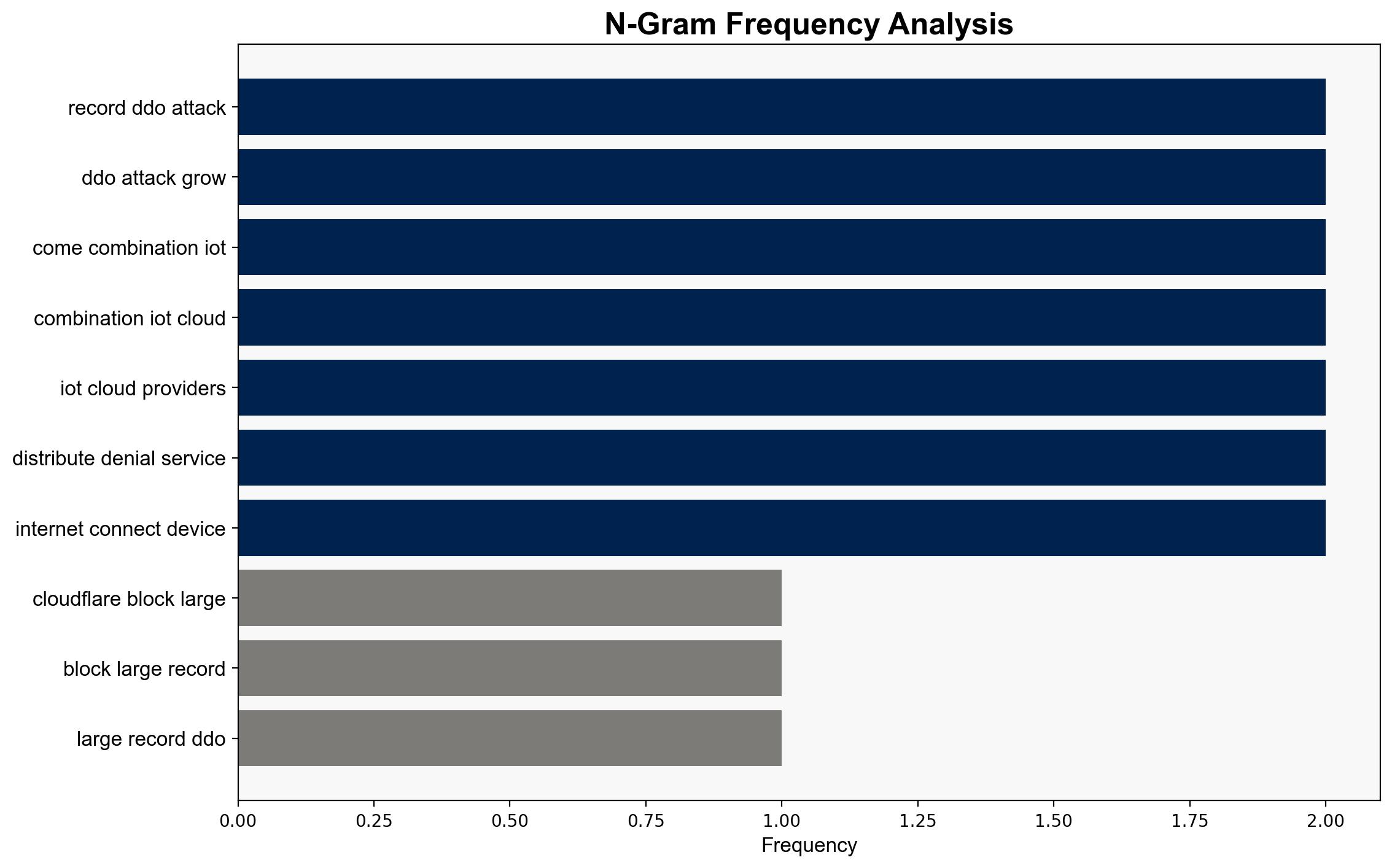Cloudflare blocks another largest recorded DDoS attack – this time peaking at 115 Tbps – TechRadar
Published on: 2025-09-03
Intelligence Report: Cloudflare blocks another largest recorded DDoS attack – this time peaking at 115 Tbps – TechRadar
1. BLUF (Bottom Line Up Front)
Cloudflare successfully mitigated a record-breaking DDoS attack peaking at 115 Tbps, highlighting the growing threat of IoT-based cyber-attacks. The most supported hypothesis is that this attack was a demonstration of capability by a sophisticated threat actor, potentially state-sponsored, to test defenses. Confidence level: Moderate. Recommended action: Enhance IoT security protocols and increase collaboration between cloud providers to improve threat intelligence sharing.
2. Competing Hypotheses
1. **Hypothesis A**: The DDoS attack was orchestrated by a state-sponsored actor to test the resilience of global internet infrastructure and gather intelligence on defensive capabilities.
2. **Hypothesis B**: The attack was conducted by a criminal organization offering DDoS-for-hire services, aiming to disrupt services for financial gain or as a demonstration to attract clients.
Using ACH 2.0, Hypothesis A is better supported due to the scale and sophistication of the attack, which suggests significant resources and strategic intent beyond typical criminal activities.
3. Key Assumptions and Red Flags
– **Assumptions**: The assumption that the attack’s sophistication implies state sponsorship; reliance on Cloudflare’s public statements without independent verification.
– **Red Flags**: Inconsistencies in the source of the attack traffic, initially attributed to Google Cloud, then corrected to a combination of IoT and cloud providers.
– **Blind Spots**: Limited information on the identity of the threat actor and the specific motivations behind the attack.
4. Implications and Strategic Risks
– **Patterns**: Increasing frequency and scale of DDoS attacks, leveraging IoT vulnerabilities.
– **Cascading Threats**: Potential for future attacks to target critical infrastructure, causing widespread disruption.
– **Economic Risks**: Increased costs for businesses to enhance cybersecurity measures and potential loss of consumer trust.
– **Geopolitical Risks**: Escalation of cyber tensions between states, leading to retaliatory cyber operations.
– **Psychological Risks**: Public fear and uncertainty regarding the security of internet services.
5. Recommendations and Outlook
- Enhance IoT device security standards and enforce stricter regulations on manufacturers.
- Foster collaboration between cloud providers to improve threat intelligence sharing and response coordination.
- Scenario-based projections:
- Best Case: Improved defenses deter future large-scale attacks.
- Worst Case: Successful attacks on critical infrastructure lead to significant economic and societal disruption.
- Most Likely: Continued escalation in attack scale and frequency, with periodic successful mitigations.
6. Key Individuals and Entities
– Cloudflare
– Google Cloud
– Unnamed IoT device manufacturers
7. Thematic Tags
national security threats, cybersecurity, counter-terrorism, regional focus




